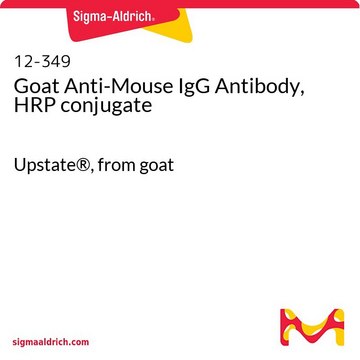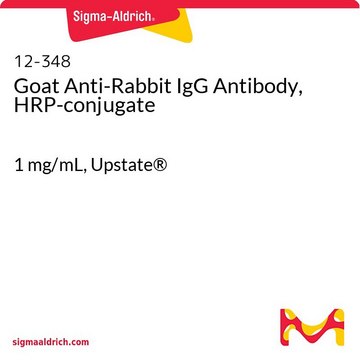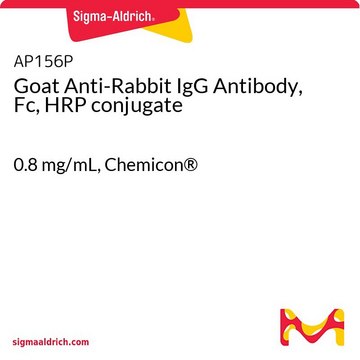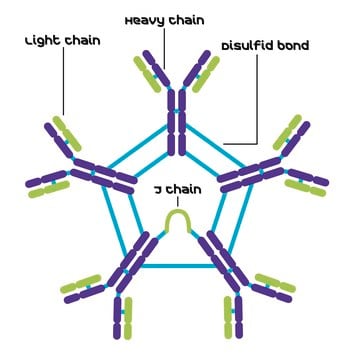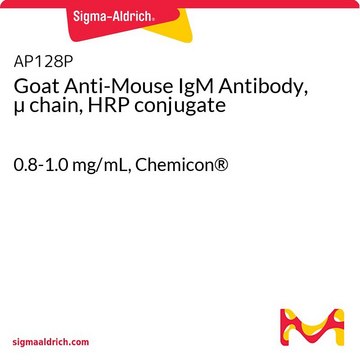AP127P
Anti-Maus-IgG-Antikörper der Ziege, Fc, HRP-Konjugat
0.8 mg/mL, Chemicon®
Synonym(e):
Anti-mouse HRP antibody
About This Item
Empfohlene Produkte
Biologische Quelle
goat
Qualitätsniveau
Konjugat
peroxidase conjugate
Antikörper-Produkttyp
secondary antibodies
Klon
polyclonal
Speziesreaktivität
mouse
Hersteller/Markenname
Chemicon®
Konzentration
0.8 mg/mL
Methode(n)
ELISA: suitable
western blot: suitable
Versandbedingung
wet ice
Posttranslationale Modifikation Target
unmodified
Anwendung
Physikalische Form
Lagerung und Haltbarkeit
Rechtliche Hinweise
Sie haben nicht das passende Produkt gefunden?
Probieren Sie unser Produkt-Auswahlhilfe. aus.
Lagerklassenschlüssel
11 - Combustible Solids
WGK
WGK 3
Analysenzertifikate (COA)
Suchen Sie nach Analysenzertifikate (COA), indem Sie die Lot-/Chargennummer des Produkts eingeben. Lot- und Chargennummern sind auf dem Produktetikett hinter den Wörtern ‘Lot’ oder ‘Batch’ (Lot oder Charge) zu finden.
Besitzen Sie dieses Produkt bereits?
In der Dokumentenbibliothek finden Sie die Dokumentation zu den Produkten, die Sie kürzlich erworben haben.
Kunden haben sich ebenfalls angesehen
Unser Team von Wissenschaftlern verfügt über Erfahrung in allen Forschungsbereichen einschließlich Life Science, Materialwissenschaften, chemischer Synthese, Chromatographie, Analytik und vielen mehr..
Setzen Sie sich mit dem technischen Dienst in Verbindung.
